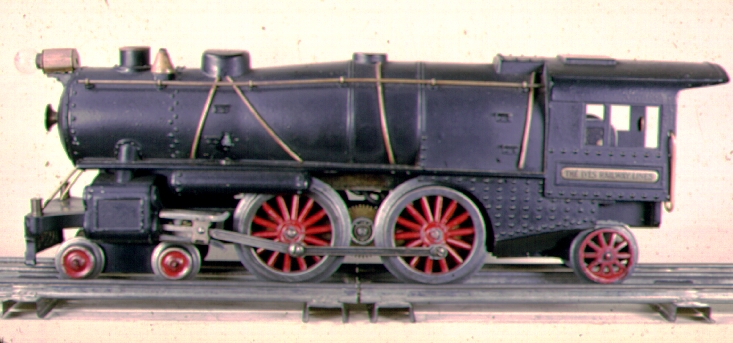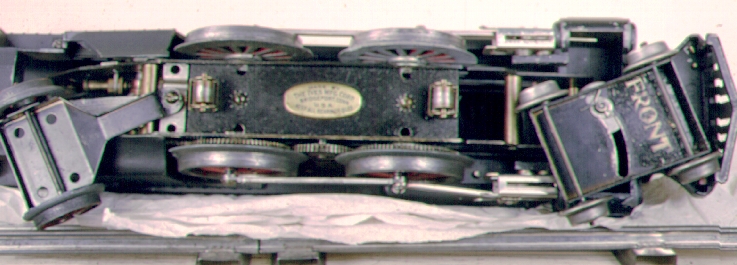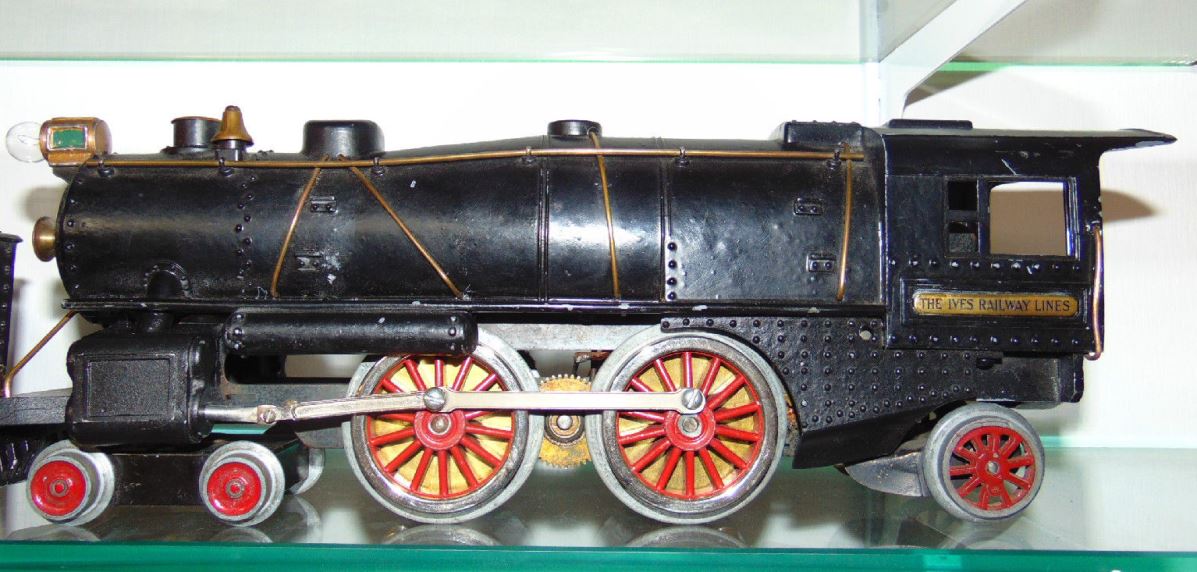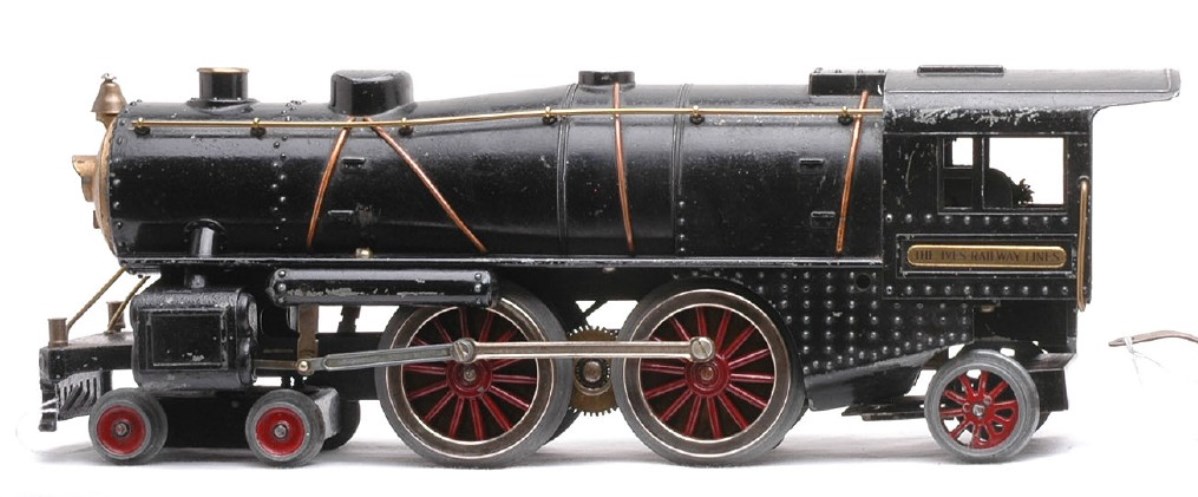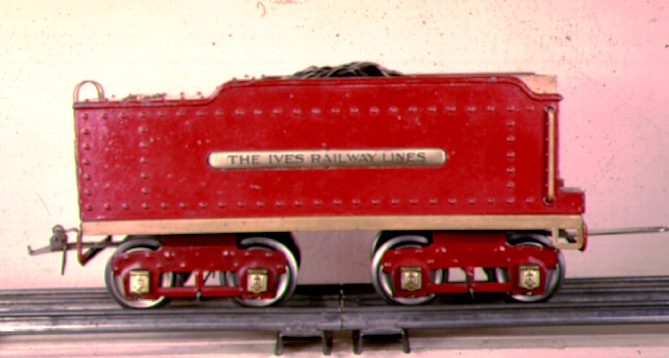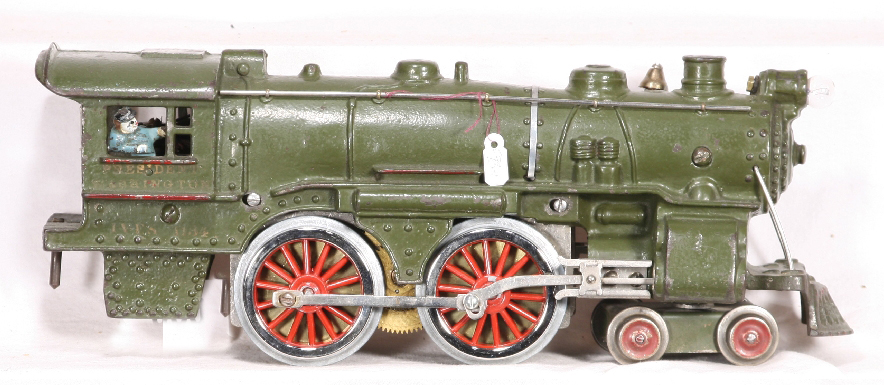
Circa 1927 - President Washington locomotive. Very unique locomotive which headed the Capital City Limited with it's 4-4-0 wheel arrangement, cast iron construction and engineer in the cab.

Bottom view of a President Washington 1134, note the front truck and motor when compared to later 1134s.
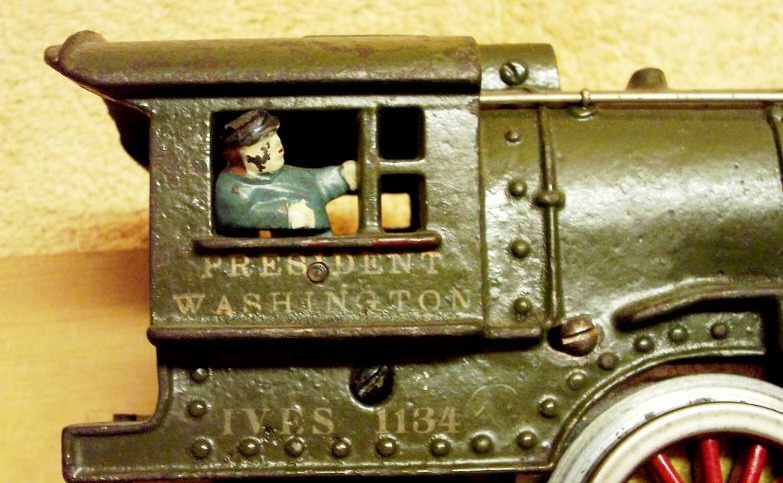
Side view of cab showing how engineer was attached.
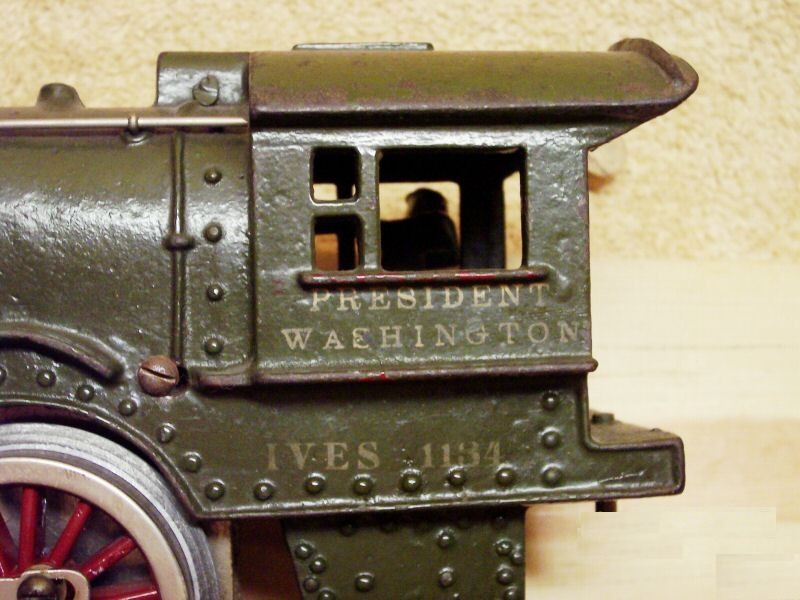

Circa 1927 - No 40 tender in olive green, below is a similar tender in black, but we're not sure what engine it might have come with.
Circa 1928 - First version of the 4-4-2 die cast 1134. Note the flat black paint, Walschaert valve gear and the lack of an oil hole in the fire box side. All features unique to 1928. After IVES was purchased by Lionel and American Flyer. American Flyer used this 1928 version of the casting to head several of their sets. American Flyer 4660 and 4694 versions.
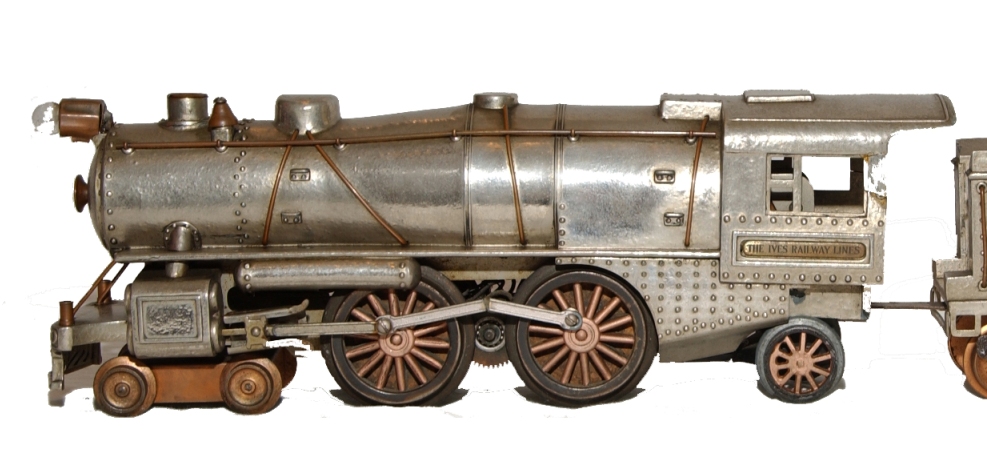
1928 nickel plated display model. These are reported to be special models plated by IVES to show off their new die-cast steamer in 1928. You can easily spot two very important 1928 details from long range - the valve gear and the No oil hole fire box side.
Bottom view of a 1928 model 1134 - note the pilot and trailing trucks and compare them to the 1929 model
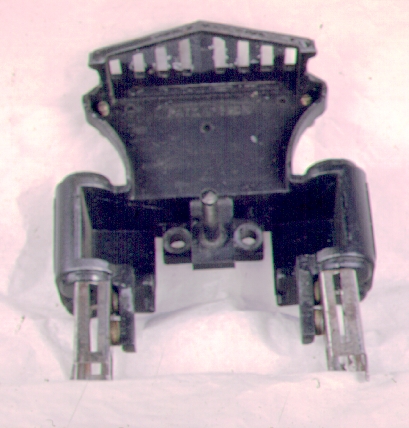
Above is the hollow pilot that was used on the 1928 1134, below is the much heavier solid pilot used on the 1929 and 1930 models.
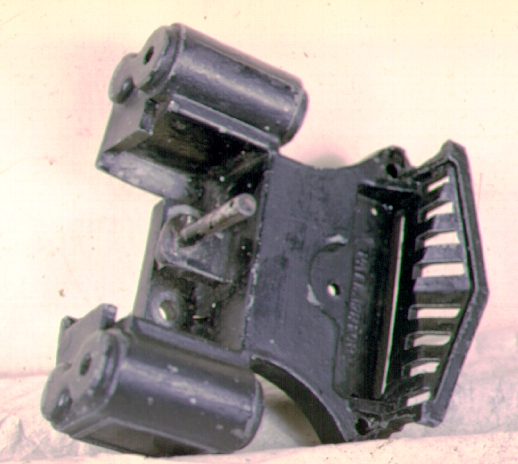
1929 No. 1134 side (above) and front (below). Note the change in valve gear from 1928.

Bottom view of 1929 No. 1134, compare that to the 1928 model
Circa 1929 - No 40 tender in semi-gloss black.
Side view above and front view below of the 1930 No. 1134
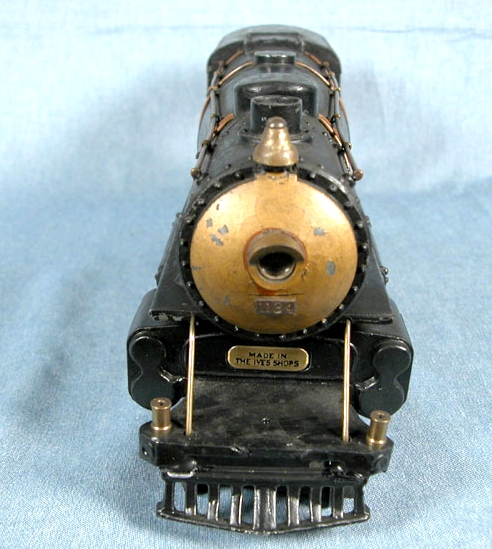

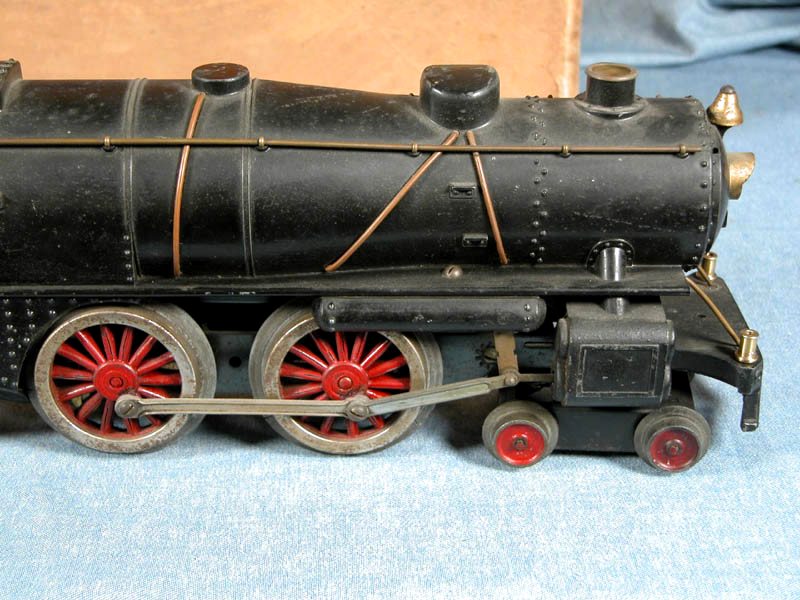
Circa 1930 - gloss black No 40 Tender
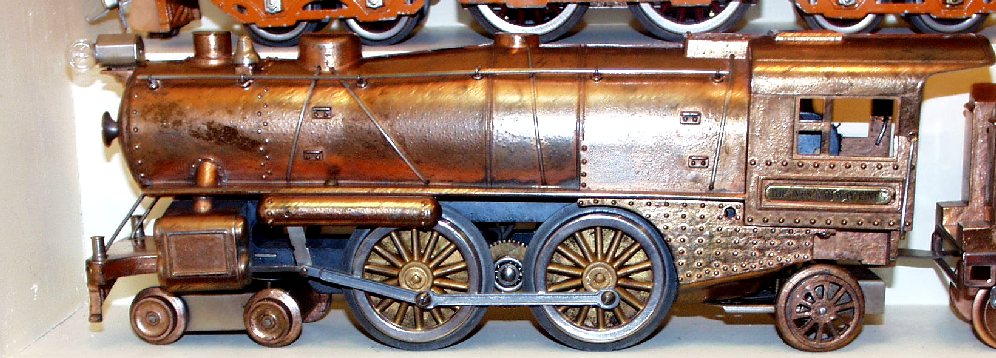
Two copper plated No. 1134s from 1929, note that the one below has red drivers while the one above has gold drivers (normally found on red locomotive).
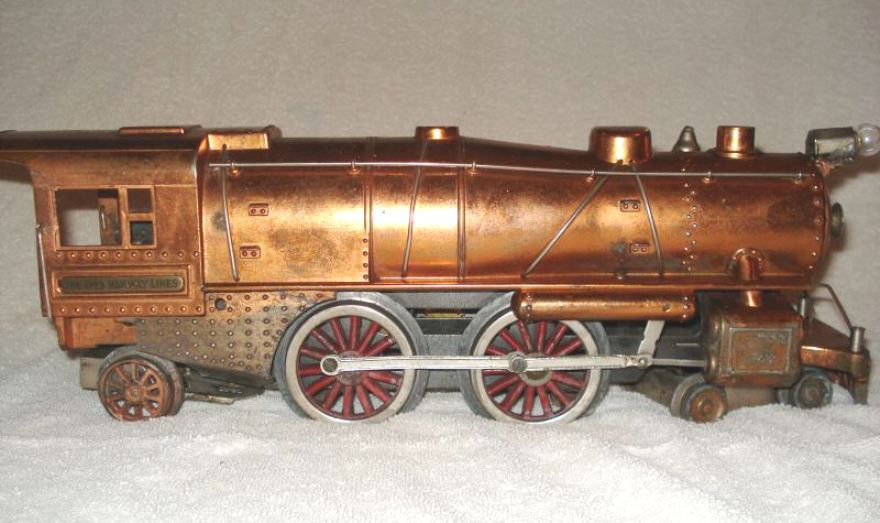
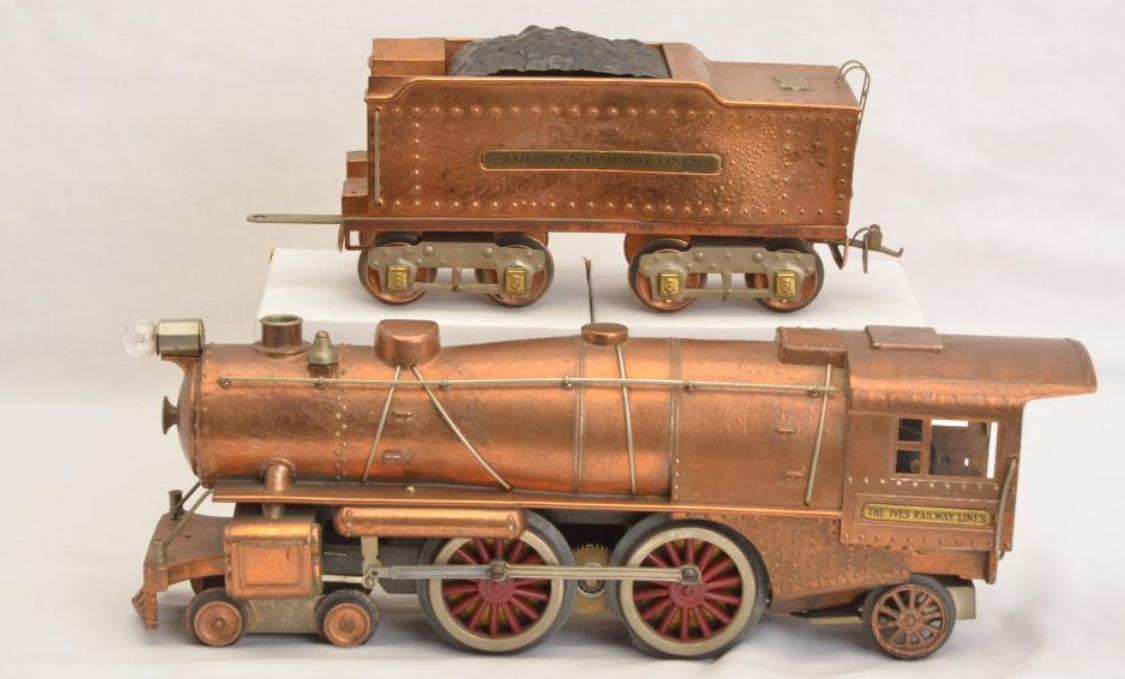

The No. 40 tender that came with the Prosperity engine - note the copper wheels and nickel trucks. Bottom of tender below.
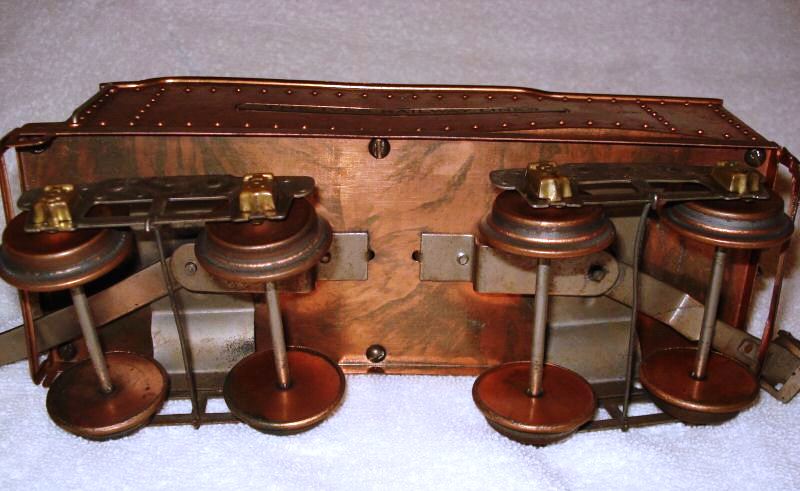
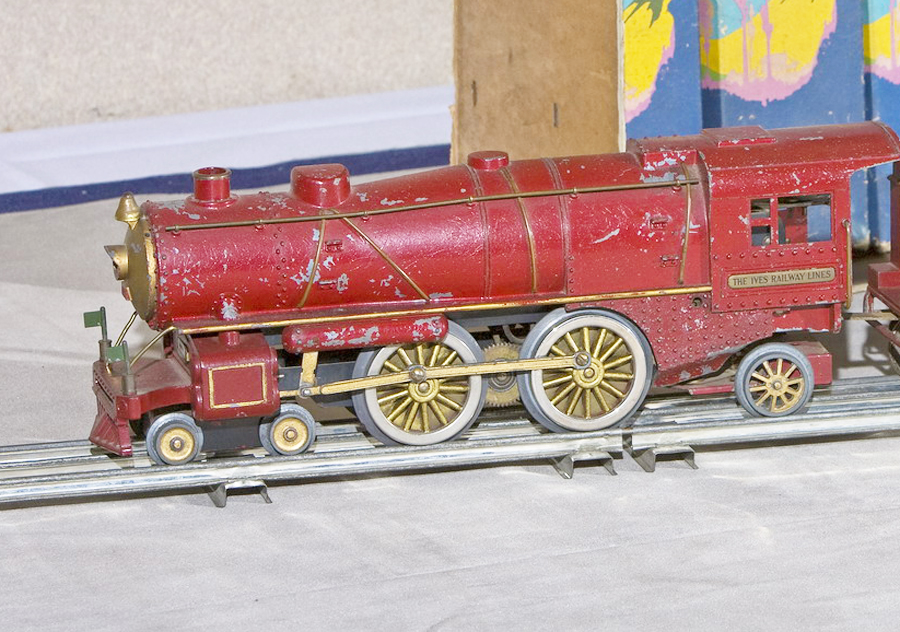
Circa 1930 - National Limited engine in Red. There are a few repaints out there. Original red National Limited locomotives should have a large weight behind the headlight and a screw into the dome behind the headlight is used to secure the weight to the boiler. The weight was there to give the engine extra traction pulling the four large Lionel bodied cars.
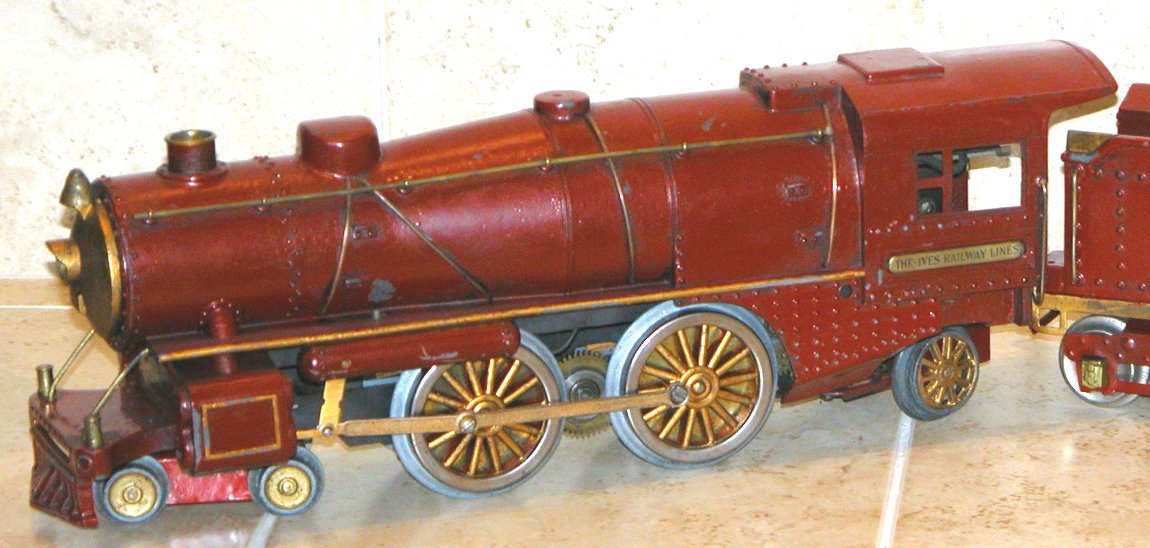
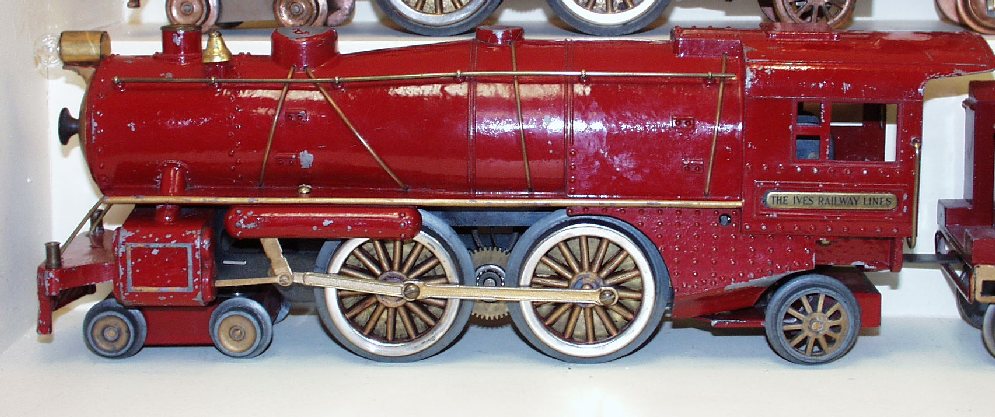
Circa 1929 Red 1134. According to popular belief the red 1134 was only manufactured in 1930 with the National Limited Sets, but this is 1929 with overhead headlight. The locomotive appears original and our best guess is that IVES had a left over casting and used it in 1930. The locomotive pictured below was made by MTH and is a complete reproduction. Besides the obvious construction differences a good Ives collector will recognize the difference between the fire engine red found on these locomotives and the cardinal red used by Ives from this period.
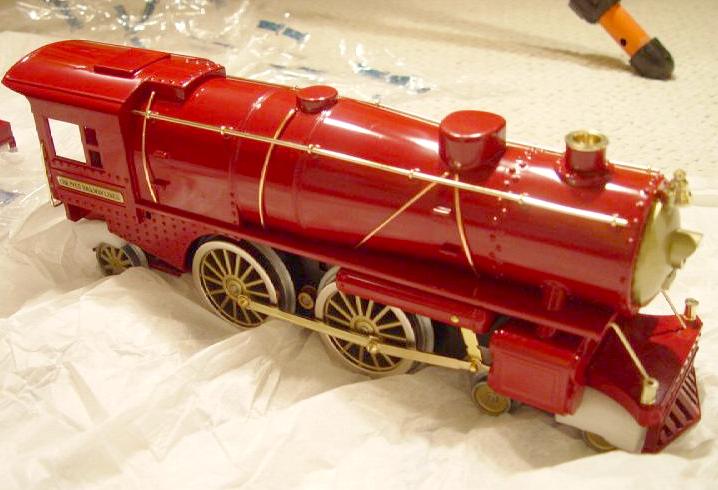
Circa 1930 - No 40 tender in red.
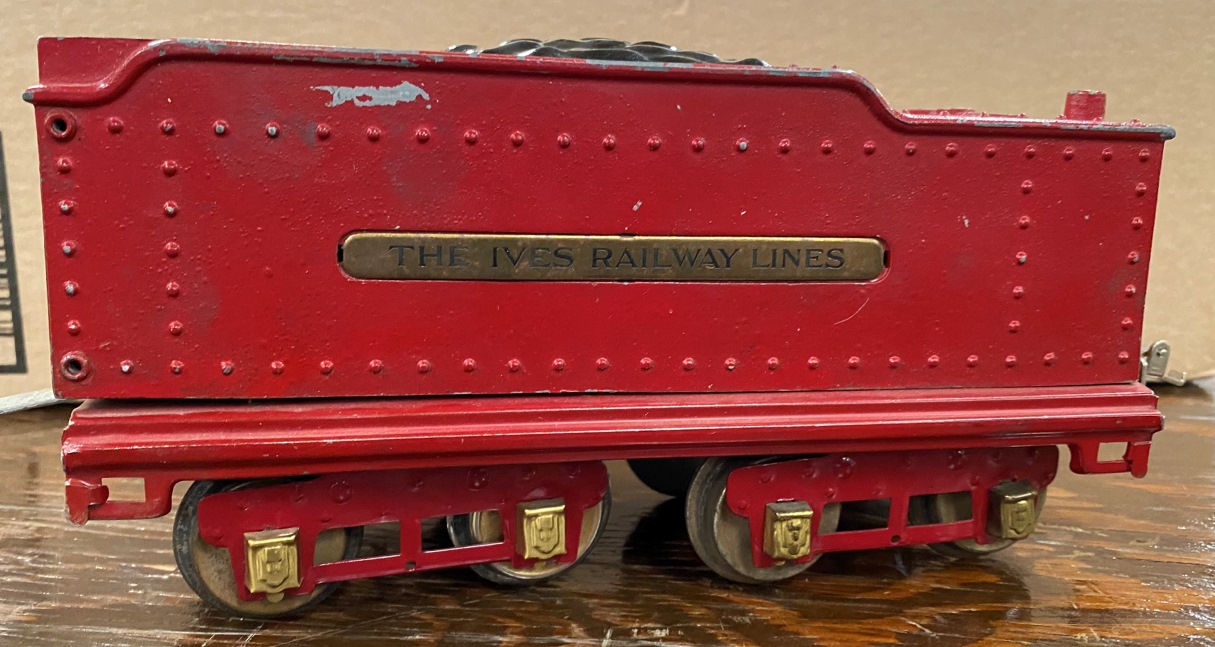
Lionel tender shell and frame with Ives trucks, cuplers and plates made during the final years of Lionel ownership

The engine above is from 1928 and is the Special cadmium-nickel plated one supposedly used as display models when the engine was first built. The 1134 below is nickel plated and would appear to be from 1929; compare that to the nickel 1134 below it which is from 1930. The example above is original, we're not sure about the two below. Note that the 1928 model has copper trucks like a prosperity; the 1929 model has black painted trucks on the tender and the 1930 model has nickel trucks on the tender.
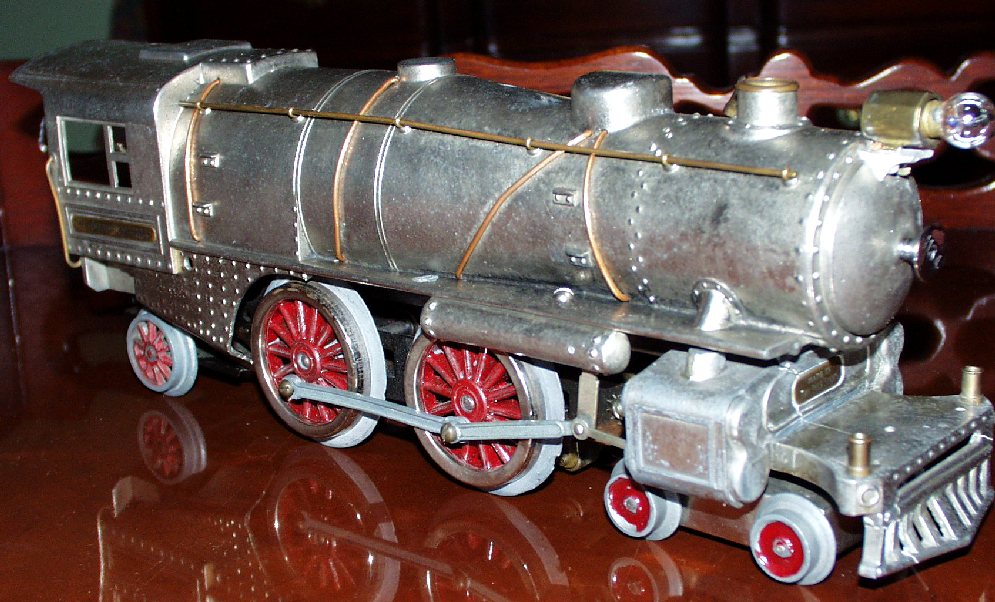

Tender for the 1929 nickel locomotive above.
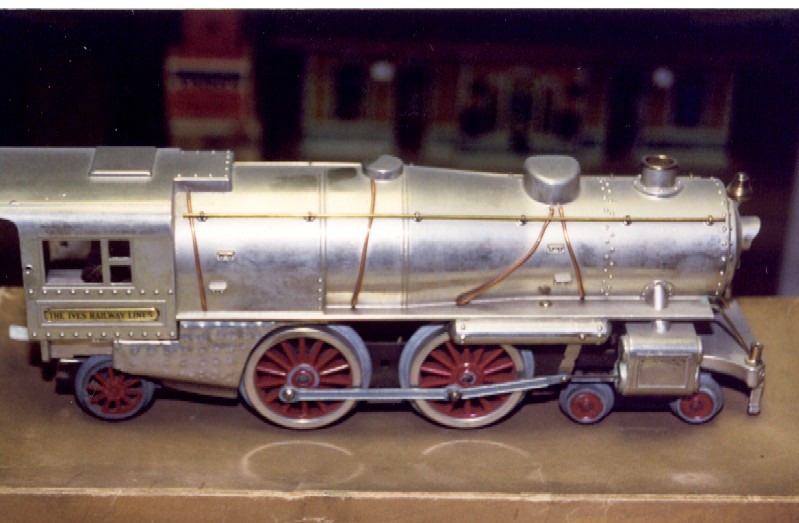
The locomotive above is questionable with it's nickel finish. The example below is real as it was part of a one-of-a-kind set that was found in Chicago, it came with four Lionel bodied cars in black with nickel plated roofs. This locomotive had the cab weight inside so that it could pull all 4 passenger cars.
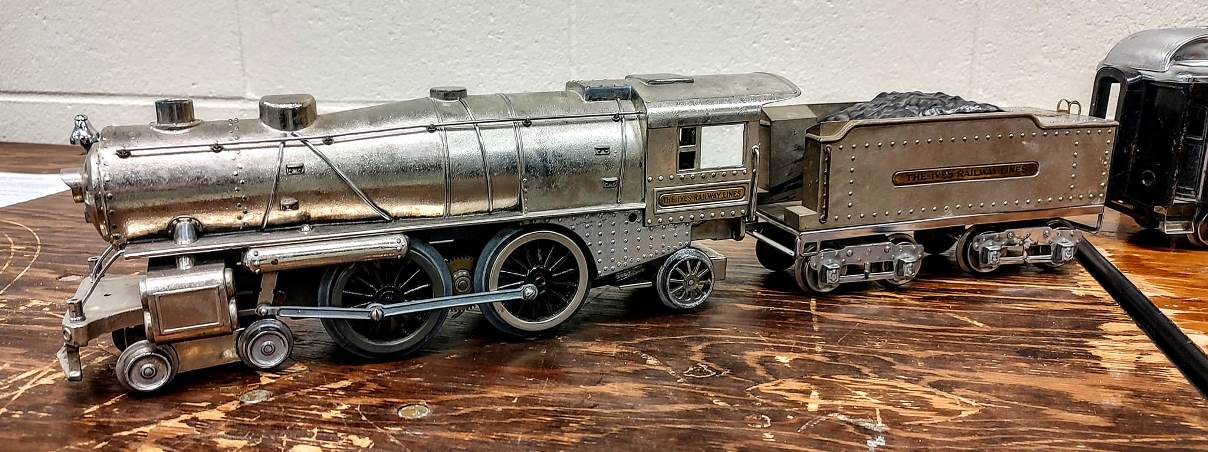
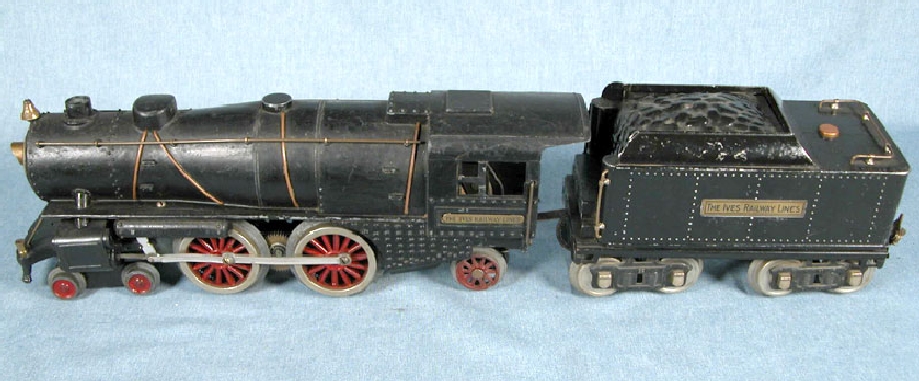
Circa 1931 - This late 1134 was probably left over and sold with this 1760Tx tender with 200 series trucks.
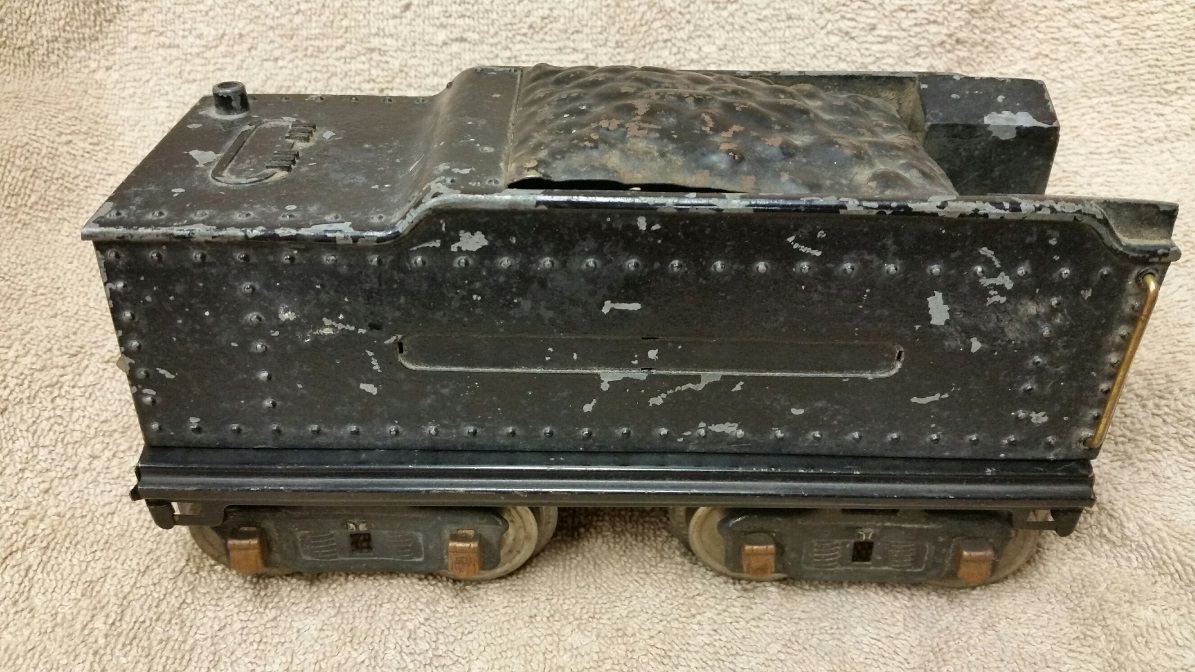
A different tender using an Ives body with 200 series trucks as you can see below it's stamped as a 1760tx, circa 1931
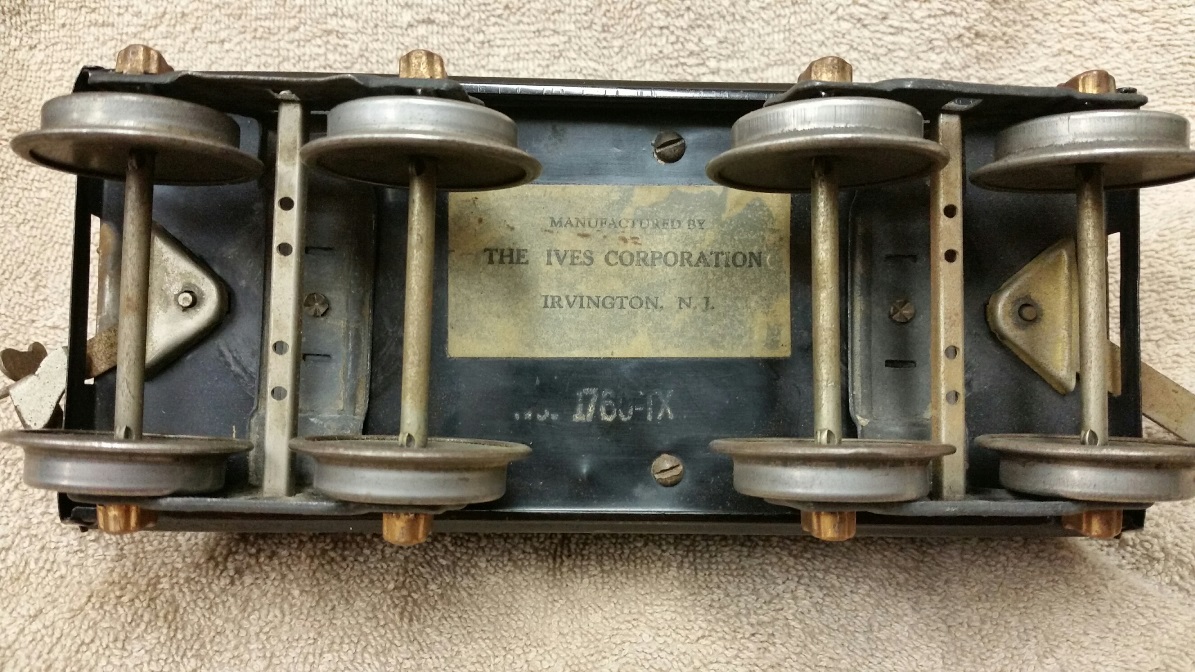
Dorfan and American Flyer Versions

